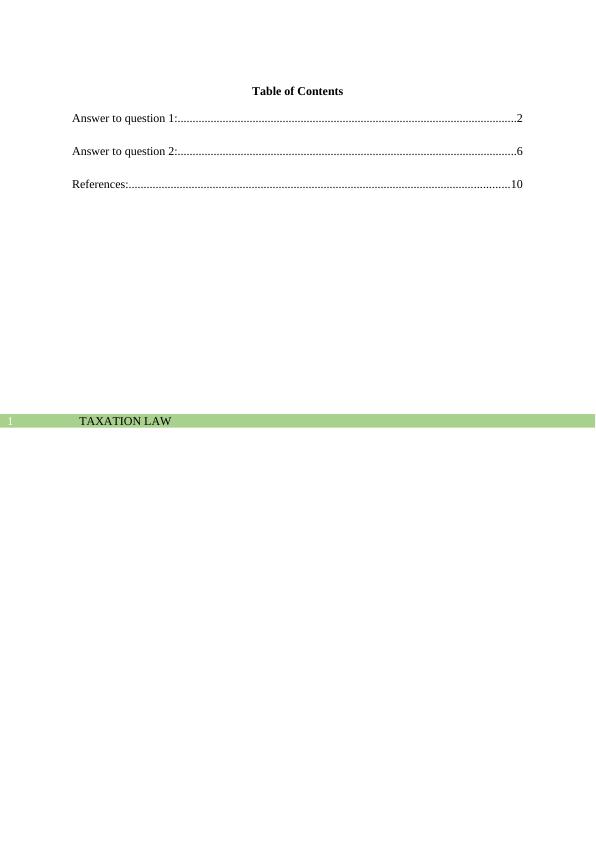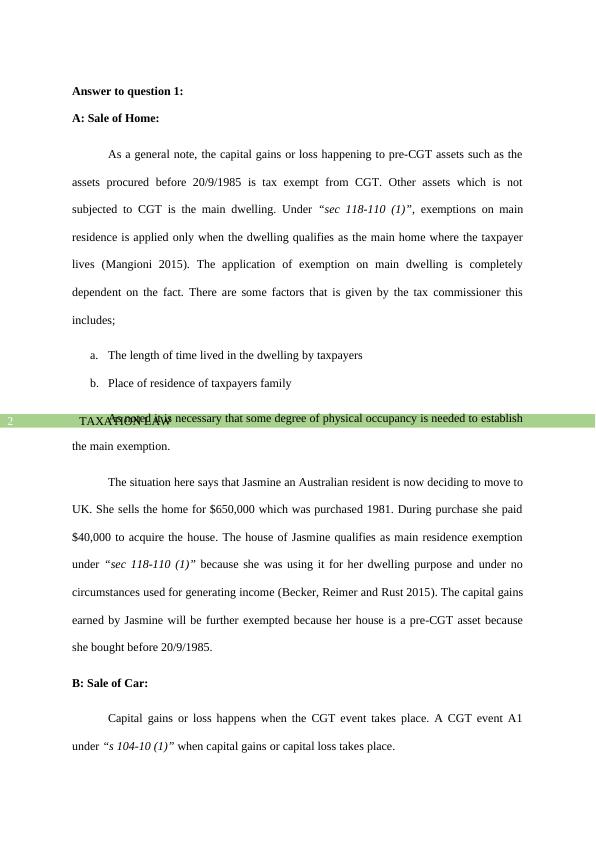Taxation Law: Capital Gains, Depreciation and Deductions
This individual assignment is a part of the assessment for the Taxation Law course at Hollmes Institute. It assesses students on their knowledge of tax law concepts, practical skills in analyzing tax law issues, and ability to apply legal tax principles.
12 Pages2713 Words80 Views
Added on 2022-11-13
About This Document
This document discusses the taxation laws related to capital gains, depreciation, and deductions. It covers topics such as the sale of a home, car, business, furniture, and paintings. It also explains the rules for claiming depreciation on a depreciating asset and the cost base of the asset.
Taxation Law: Capital Gains, Depreciation and Deductions
This individual assignment is a part of the assessment for the Taxation Law course at Hollmes Institute. It assesses students on their knowledge of tax law concepts, practical skills in analyzing tax law issues, and ability to apply legal tax principles.
Added on 2022-11-13
ShareRelated Documents
End of preview
Want to access all the pages? Upload your documents or become a member.
Taxation Law: Capital Gains, Personal Use Assets, Small Business Concessions, Depreciation
|12
|2821
|413
Taxation Law: Capital Gains Tax and Depreciation
|11
|2720
|138
Taxation Law: Capital Gains and Deductions
|13
|2975
|27
Taxation Law: Capital Gains and Depreciating Assets
|12
|2914
|54
Taxation Law
|13
|2954
|1
Taxation Law: Capital Gains and Depreciation
|13
|2848
|237




